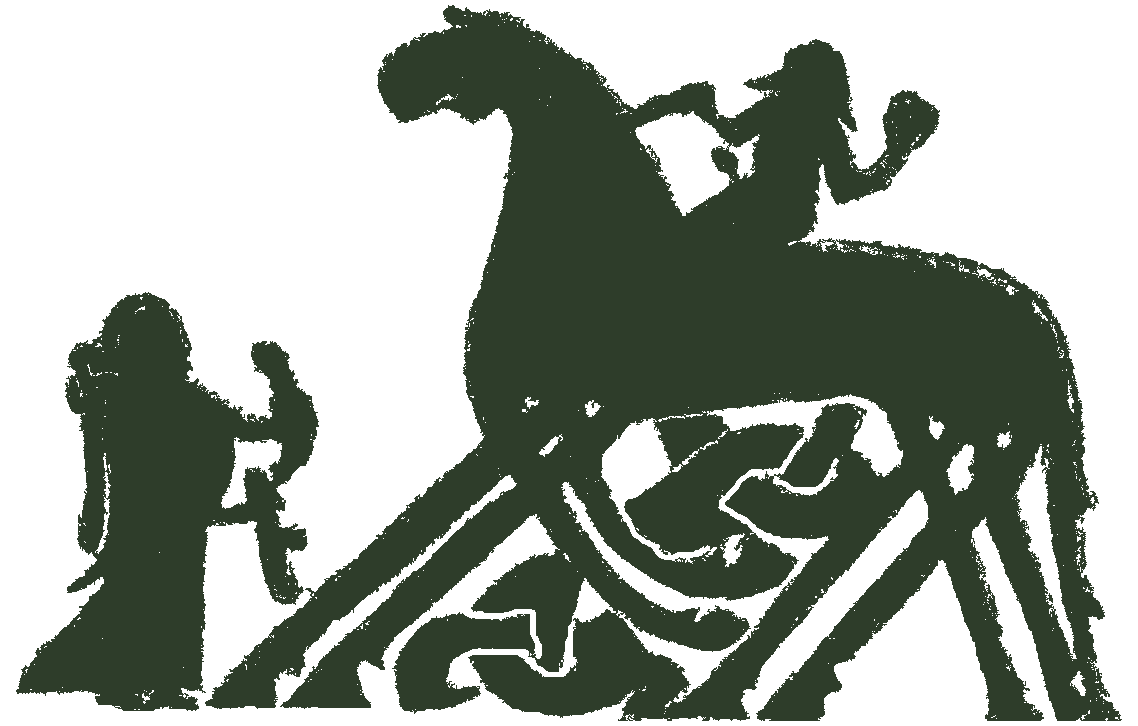in progress
text
Gylf ch. 9b
9b. Óðinn, Frigg and Þórr
Þar er einn staður er Hliðskj... | In the city there is a seat c... |
[status: unverified copy]
Gylf ch. 15c
15c.
En Þór gengur til dómsins og ... | And Thor walks to the court a... |
[status: unverified copy]
Gylf ch. 21b
21b.
Þá mælti Gangleri: "Hver ... | Then spoke Gangleri: 'What ar... |
[status: unverified copy]
commentary
context
Gylfaginning, which is part of Snorra Edda, was composed in Iceland in the 13th century, and holds the stories of many of the Pre-Christian myths of northern Europe. It is believe to have been composed by the Icelander Snorri Sturlusson. Snorra Edda consists of three separate parts, Gylfaginning, Skaldskápamáland Háttatal, all functioning together as a greater work and guide for the aspiring medieval poet and storyteller.
commentary
Þórr is the god of thunder, the killer of jötnar and the strongest amongst the Æsir. He is named Óðinns son and the brother of Baldr. He is described as immensly strong being the defender of the gods, red-bearded and said to be the short-tempered and rather gullible or simple-minded. His wife is the goddess Sif and he lives in Þrúðheimr or Þrúðvangr. He travels through the worlds in his chariot drawn by his male goats Tanngrísnir and Tanngnjóstr hunting for jötnar. His hammer Mjöllnir is his most famous attribute, a weapon of great power often used as he hunts to kill the jötnar. The symbol of the hammer also is a recurrent symbol found in archaeological contexts throughout northern Europe. Þórr’s greatest enemy is the Midgard serpent which he battles several times as seen in Hymiskviða. He finally succeeds in killing the serpent at Ragnarök only to die himself shortly after being poisoned by the serpent in the battle, as told in Völuspá 56 and Gylfaginning 50.
For more, see:
Ellis Davidson, H. R, (1990), Gods and Myths of Northern Europe. London: Penguin Books. pp. 73-90
Perkins, R. (2001). Thor the wind-raiser and the Eyrarland image. (Viking Society for Northern Research
Simek, Rudolf (2007), Transl: Angela Hall. Dictionary of Northern Mythology. Cambridge: D.S. Brewer. pp. 317-326.
Steinsland, Gro (2005), Norrøn Religion. Myter, Riter, Samfunn. Oslo: Pax Forlag. pp.195-207.
Taggart, D. (2018), How Thor Lost his Thunder. The Changing Faces of an Old Norse God. Routledge Research in Medieval Studies 14. London & New York: Routledge
(Contributed by Liv Marit Aurdal.)
tags
Main text: Gylfaginning
Attributes: battle Superhuman strength Hammer Battle Assembly Wagon Hall gods in wagons Weapon Goat Giants River Water Æsir Protect/watch
Named things:
Text sections: SnSt, Gylf ch. 15c SnSt, Gylf ch. 21b SnSt, Gylf ch. 9b
